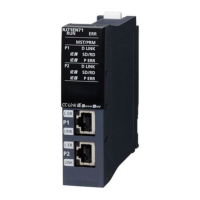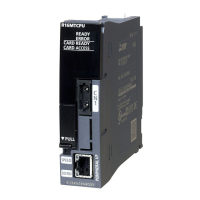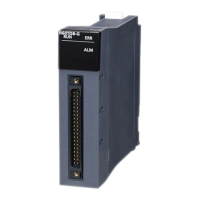328
16 TRANSPARENT CODES AND ADDITIONAL CODES
16.3 Handling Transparent and Additional Codes for Nonprocedural Protocol Data Communication
16.3 Handling Transparent and Additional Codes for
Nonprocedural Protocol Data Communication
This section explains how to handle the transparent codes and additional codes during data communication using the
nonprocedural protocol.
Adding/deleting data
The data designated by the additional code is added to/deleted from the data to be transmitted or received.
Transmitted/received data range for processing
The range of transmitted/received data to which the processing of transparent codes and additional codes is performed is as
shown below.
C24 performs the following processing during data transmission and reception.
■At the time of data reception
When an additional code set for reception is detected, C24 removes the additional code data and perform data reception
processing by treating the immediately succeeding 1-byte data as a part of the received data.
■At the time of data transmission
When transparent code/additional code data set for transmission is detected, C24 transmits data by adding the additional
code designation data immediately before it.
During data transmission using user frames, even if a transparent code or additional code has been specified in the
transparent code for sending specification area, it is possible to transmit data without adding the additional code data to the
user frame portion or arbitrary data portion.
When sending data without adding the additional code specified by the transparent code for sending specification, specify the
user frame number using the following method.
• Specify the number obtained by adding 4000H to the registered user frame No.
When sending data in the portions designated in 4001H to 44AFH, C000H to C01FH, the data is transmitted without
conversion even when the following designations are enabled.
• Designating "Enable" in the ASCII-BIN conversion designation area. (Page 348 ASCII-BIN Conversion for Data
Communicated with Nonprocedural Protocol)
• Designating "Auto delete enabled" in the NULL character automatic removal designation area. (Page 408 NULL
Character Removal to Send Data using Nonprocedural Protocol)
User frame No. to be sent Specified No. when transmitting data without adding the additional code specified by the
transparent code for sending specification (4000H added)
1H to 3E7H (1 to 999) 4001H to 43E7H (16385 to 17383)
3E8H to 4AFH (1000 to 1199) 43E8H to 44AFH (17384 to 17583)
8000H to 801FH (-32768 to -32737) C000H to C01FH (-16384 to -16353)
Applicable range during transmission
Message during
communication using
arbitrary format
Arbitrary data
Applicable range during reception
Applicable range during transmission
User frame
(first frame)
User frame
(last frame)
Arbitrary
data
Message during
communication using
user frames
Applicable range during reception
to
b15 b14 b13 b0
Frame No.
0: Conversion enable 1: Conversion disable
0: Frame registered in flash ROM 1: Frame registered in the buffer memory

